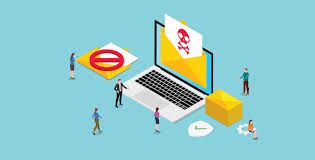Introduction
Have you ever found important emails in your email junk folder, buried among unwanted messages? If so, you're not alone. Email junk folders, also known as spam folders, are designed to filter out unwanted and potentially malicious emails. However, they can sometimes be overzealous and catch legitimate emails as well. In this comprehensive guide, we will explore the world of email junk folders, learn how to check and manage them effectively, and ensure that you never miss an important message again.
Understanding Email Junk Filters
Email service providers employ sophisticated algorithms and technologies to automatically filter incoming emails and determine whether they are spam or legitimate messages. These filters analyze various factors, including the sender's reputation, email content, subject lines, and attachment types, to make an informed decision.
Checking Your Email Junk Folder
It is essential to regularly check your email junk folder to ensure that no important emails have been mistakenly filtered out. Here are the steps to check your email junk folder in some popular email clients:
1. Gmail: In Gmail, click on the "Spam" label on the left-hand side of the screen. Here you can review all emails marked as spam and move any legitimate messages to your inbox.
2. Outlook: In Outlook, navigate to the "Junk Email" folder located in the left sidebar. Check this folder regularly and move any legitimate emails to your inbox by right-clicking on them and selecting "Not Junk".
3. Yahoo Mail: In Yahoo Mail, look for the "Spam" folder in the left sidebar. Open this folder and review the emails marked as spam. If you find any legitimate messages, mark them as "Not Spam".
4. Apple Mail: In Apple Mail, click on the "Junk" mailbox located in the sidebar. Here you can review emails identified as junk and move any legitimate messages to your inbox.
Managing Your Email Junk Folder
While email service providers strive to keep your inbox clean, some legitimate emails may still end up in your junk folder. Here are some best practices to effectively manage your email junk folder:
1. Regularly Review Your Junk Folder: Set aside time on a regular basis to review your email junk folder. This will ensure that you don't miss any important messages and allow you to identify any patterns of false positives.
2. Mark Legitimate Emails as Not Junk: When you find legitimate emails in your junk folder, mark them as "Not Junk" or move them to your inbox. This action helps train the email filter and improves its accuracy in the future.
3. Whitelist Trusted Senders: Whitelisting is the process of adding trusted senders to a list of approved contacts. By whitelisting certain email addresses or domains, you inform the email filter that these senders are not spam. Check your email client's settings or preferences to add trusted senders to your whitelist.
4. Report False Positives: If you consistently find legitimate emails in your junk folder from a specific sender, consider reporting the issue to your email service provider. They can investigate the matter and make adjustments to improve the filtering accuracy.
Commonly Asked Questions about Email Junk Folders
Q: Why are legitimate emails marked as spam?
A: Legitimate emails can be marked as spam due to various factors, such as poor email formatting, suspicious content, or unfamiliar senders. Additionally, the algorithms used by email service providers may occasionally generate false positives.
Q: How can I avoid my emails being marked as spam?
A: To avoid your emails being marked as spam, ensure that you follow email best practices, such as using a reputable email service provider, authenticating your email domain with SPF, DKIM, and DMARC records, avoiding spam trigger words, and regularly monitoring your email deliverability and sender reputation.
Q: Can I disable the junk email filter?
A: Most email clients do not allow you to disable the junk email filter completely. However, you can adjust the filter's sensitivity levels or create custom rules to fine-tune its behavior according to your preferences.
Q: How can I check if my emails are being marked as spam?
A: You can use email deliverability tools or services that provide spam testing and analytics. These tools simulate the spam filters used by email service providers and give you insights into how your emails are evaluated.
Conclusion
Your email junk folder is an important component of your email service provider's efforts to filter out unwanted and potentially harmful messages. While these filters are effective, they may occasionally catch legitimate emails. By understanding how email junk filters work, regularly checking your junk folder, and managing it effectively, you can ensure that important messages reach your inbox. Follow the best practices outlined in this guide, stay vigilant, and never miss a crucial email again.



